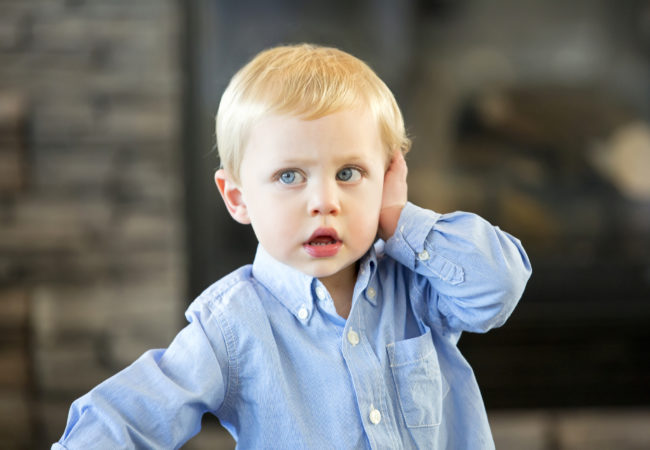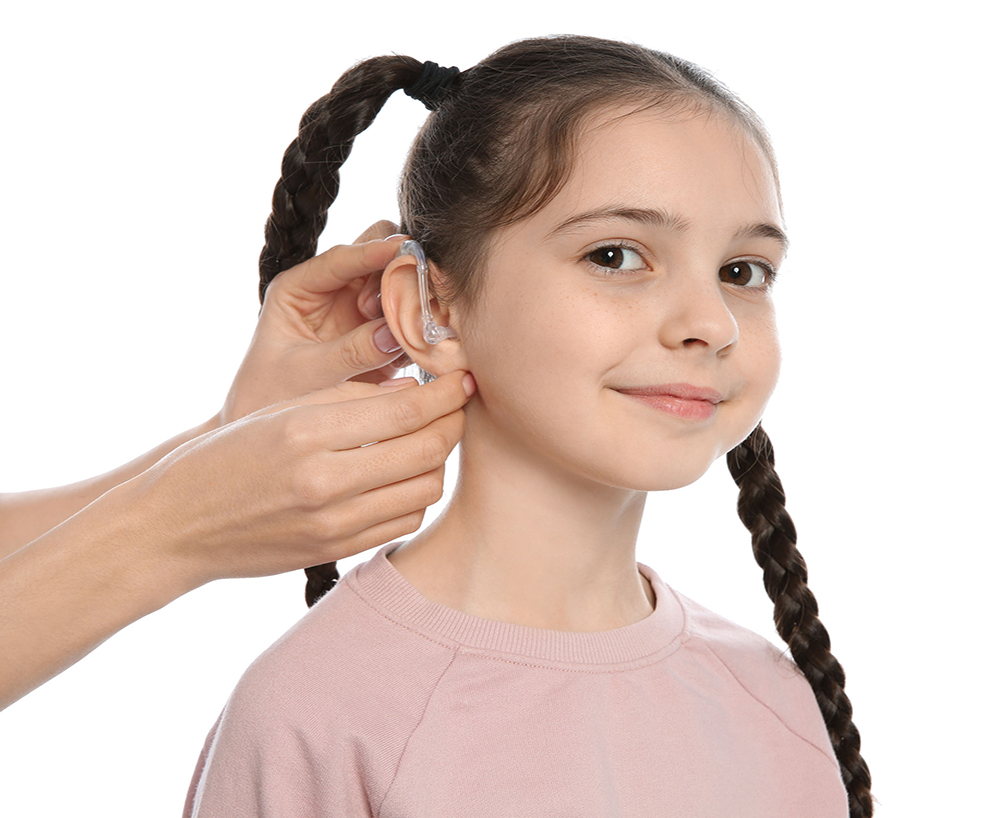Deafness, or hearing loss, is a condition that occurs when one or more parts of the ear aren’t working properly. These parts include the outer ear, middle ear, inner ear, hearing nerve (acoustic nerve), and auditory symptoms. Deafness is one of the most common birth defects in the world, but it can also develop later in life. Deafness in children can affect their ability to grow and develop speech, social skills, and language. Numerous causes can possibly lead to deafness in children, whether the condition is present at birth (congenital) or happens after birth (acquired).

Congenital hearing loss can be caused by numerous different things. Most of the causes of hearing loss in children are genetic, meaning it is inherited from a parent. Genetic factors that can cause congenital hearing loss are as follows:
- Autosomal recessive hearing loss accounts for about 70 percent of all genetic hearing loss. With this condition, the parents have no hearing loss, but they carry a recessive gene. Most parents are surprised when they find out that their child is born with autosomal recessive hearing loss because they did not know that they carried the recessive gene.
- Genetic syndromes, including Down syndrome, Treacher Collins syndrome, Usher syndrome, Crouzon syndrome, Alport syndrome, and Waardenburg syndrome.
- Autosomal dominant hearing loss happens when one parent that carries a dominant gene for deafness passes it to his/her child. The parent may or may not have deafness, but might experience symptoms of a genetic syndrome.
Congenital hearing loss can also be caused by non-genetic factors, such as:
- Premature birth, babies that require life-sustaining drugs or have a birth weight less than 3 pounds due to premature birth are more likely to have hearing loss.
- Complications at birth, such as the presence of herpes, toxoplasmosis, rubella cytomegalovirus, or other serious infections. Babies who experience a lack of oxygen or require a blood transfusion at birth are also at risk of hearing loss.
- Certain drugs used by the mother during pregnancy. Ototoxic medications possibly damage to the hearing structures in a fetus. These medications are usually prescribed and can be found in some antibiotics as well as pain relievers.
- Infection during pregnancy can happen to the mother, such as herpes simplex, toxoplasmosis, German measles, and cytomegalovirus.
- A brain or nervous system disorder.
- Maternal diabetes.
- Smoking and drug or alcohol abuse the mother during pregnancy.
Deafness can also occur in children later in life. This condition is known as an acquired hearing loss. The severity can range from mild, moderate, to severe. Some causes of acquired hearing loss are:
- Progressive diseases, such as Meniere’s diseases
- Some illnesses, such as meningitis, chickenpox, the flu, and encephalitis
- Exposure to very loud noises
- A perforated eardrum
- Medications linked to hearing loss
- Exposure to second-hand smoke
- A serious head injury
- Frequent or untreated otitis media.
Some children may experience fluctuating or transient hearing loss, meaning their hearing loss comes and goes. It is often caused by otitis media or middle ear infection. This condition usually happens because young children’s Eustachian tubes (the tube that connects the middle ear to the nose) are not fully formed yet, making it very susceptible to blockage by large adenoids or fluids. Otitis media can cause fluctuating hearing loss because the excess fluids keep the tiny bones in the middle ear from working effectively.
- The level of deafness or hearing loss in children can be described by their decibel (dB) hearing level, or by ‘mild,’ ‘moderate,’ ’severe,’ and ‘profound.’ The levels are usually described as:
- Mild (21 to 40 dB)
- Moderate (41 to 70 dB)
- Severe (71 to 95 dB)
- Profound (95 dB).
Deafness is also divided into different types by frequency. The types usually range from high to low-frequency hearing loss. All sounds are made up of different frequency that affects the pitch that the sound is heard at. Speech consists of consonants and vowels that are made up of a range of frequencies. If your child has high-frequency hearing loss, he or she may struggle to hear certain consonants, resulting in muffled sounds. If they have this, they may be able to hear, but not understand. The opposite of high-frequency hearing loss is low-frequency hearing loss, which is a lot more uncommon. If your child has low-frequency hearing loss, he or she can still understand speech well but will have a hard time hearing in noisy environments or hearing conversations within groups or people.

Young woman putting hearing aid in little girl’s ear on white background
Knowing the signs of hearing loss in children is very important for parents, caretakers, and teachers, so they can address the issue as early as possible. Untreated hearing loss can cause emotional and developmental problems in children. Unless the hearing loss was diagnosed at birth, the parents are usually the first people to notice. The following are some of the earliest signs you need to be aware of.
In babies:
- Does not have any reaction to loud noises
- Does not respond to your voice, some parents mistake it for not paying attention or just ignoring them.
- Does not say a single word by the age of one, such as “mama” or “dada”
- Makes simple sounds that taper off.
In children:
- Delayed speech
- Unclear speech
- Does not follow any directions you give; some parents also mistake this as not paying attention
- Saying “what?” or “huh?” a lot
- Turning the TV or video volume up too high
- Misunderstands questions.
If your child has otitis media, you need to be aware of these symptoms:
- Cranky for no reason
- Have little energy
- Not paying attention
- Have a fever
- Not understanding directions
- Have ear pain.
If you notice any of these symptoms in your child, you need to talk to a doctor as soon as possible. The doctor will perform a hearing screening to confirm if your child has a hearing loss. A hearing screening is not painful, easy, and only takes a few minutes. All babies usually have a hearing screening before 1 month of age. Most babies have it while still in the hospital, a few days after birth. Children usually get tested before they enter school or when there’s a concern about the child’s hearing ability.
The treatment for hearing loss in children depends on the severity and the cause. The most common forms of treatment are hearing aids, cochlear implants, speech therapy, and assistive listening devices.
- Hearing aids are devices to help a child who has hearing loss to hear clearly. They can work for most levels of hearing loss. Hearing aids for children usually come with special coverings or other accessories to make sure he or she doesn’t misplace or remove it.
- Bone-anchored hearing systems are for children who can’t use hearing aids. Bone-anchored hearing systems are implanted devices that treat hearing loss through the bone transmission of sound vibrations to the inner ear.
- Cochlear implants are devices that surgically implanted to directly stimulate the auditory nerve in the child’s inner ear through electrical stimulation.
- Speech therapy is for children whose hearing loss has affected their speech or children who have hearing aids/cochlear implants to help him or her catch up on speech delays.